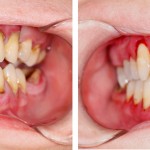
Periodontal disease is very common being the 6th most prevalent human disease. The health care costs associated with treatment and management of periodontal disease is significant and untreated or unsuccessful treatment leads to tooth loss. A number of potential predictors of tooth loss have been reported e.g. age compliance and smoking, although the consistency and magnitude of any association between predictors remains unclear.
The aim of this review was to assess the predictors of tooth loss in patients with periodontitis undergoing treatment and receiving supportive care.
Methods
Searches were conducted in the Medline, Embase and Cochrane Central databases. Pro‐ and retrospective observational studies (e.g., cohort studies or case series) as well as interventional longitudinal studies (e.g., randomized controlled trials) with at least 3 years follow up and published in English were considered. Two reviewers independently screened and selected studies and abstracted data. Assessment of study quality was also conducted independently by two reviewers using a modified version of the Newcastle-Ottawa Scale. Random effects meta-analysis and meta-regression was carried out.
Results
- 20 studies involving a total of 14,422 patients were included.
- Mean follow-up was 12 years (range 4-10 years)
- 8 studies included only patients with chronic periodontitis, 3 with aggressive periodontitis. The remainder either included both or did not provide information.
- 5 studies were considered to be of high quality, 9 moderate quality and 6 low quality.
- Association with 6 patients and tooth level parameters were explored.
Patient level parameters
| Parameter | No. of studies | Odds Ratio (95%CI) |
| Smoking | 15 | 1.98, (1.58 – 2.48) |
| IL‐1 gene polymorphism | 3 | 1.80, (1.29 ‐ 2.52) |
| Diabetes | 7 | 1.80, (1.26 – 2.57) |
| Patient compliance | 11 | 1.51, (1.06 – 2.16) |
| Age | 8 | 1.05, (1.03 – 1.08) |
| Gender | 16 | 0.95, (0.86 – 1.05) |
Tooth level parameters
| Parameter | No. of studies | Odds Ratio (95%CI) |
| Molars | 4 | 4.22, (2.12–8.39) |
| Mobility | 4 | 3.71, (1.65–8.38) |
| Existing endodontic treatment or lesion | 3 | 3.62, (0.99–13.2) |
| Pocket probing depth | 6 | 3.19, (1.70–5.98) |
| Furcation involvement | 5 | 2.68, (1.75–4.08) |
| Bone loss | 3 | 1.04 (1.03–1.05) |
- The meta-regression analysis showed 3 patient level factors to be significantly associated with tooth loss. compliance (1.52; 1.10–2.11), diabetes (1.84; 1.23–2.73) and smoking (1.91; 1.54–2.78). With the exception of bone loss all tooth factors were significantly associated with tooth loss. Tooth types (molars) and tooth mobility having the strongest associations.
Conclusions
The authors concluded: –
older, non‐compliant patients, smokers, diabetics, those with IL‐1‐polymorphism, and teeth with bone loss, high probing pocket depths, mobility, as well as molars, especially with furcation involvement, are at higher risk of tooth loss. In conclusion, certain, mainly tooth‐level predictors were consistently found associated with tooth loss. However, given the high heterogeneity across studies, generalizability to all patients and settings may not be given. Dentists should cautiously apply predictors for the risk of tooth loss during clinical decision‐making.
Comments
This well conducted review includes a good selection of studies with long-term follow-up. However, as the authors highlight the study populations are mainly compliant patients receiving long-term supportive periodontal treatment so are unlikely to be truly representative of a general population. The calculated mean average tooth loss of 0.12 teeth per annum might be seen as an indicator of this. There is also a high level of heterogeneity in the patients sampled which may be associated with clinical variability and while some studies were clear on the type of periodontal patients included almost 50% of the studies did not. The authors also excluded studies not published in English which may have an impact on the findings although the authors suggest that this may not be significant.
Links
Primary Paper
Helal O, Göstemeyer G, Krois J, Fawzy El Sayed K, Graetz C, Schwendicke F. Predictors for tooth loss in periodontitis patients: Systematic review and meta-analysis. J Clin Periodontol. 2019 Jul;46(7):699-712. doi:10.1111/jcpe.13118. Epub 2019 May 28. Review. PubMed PMID: 31025366.
Other references
Dental Elf – 12th Dec 2018
Dental Elf – Periodontal disease blogs
